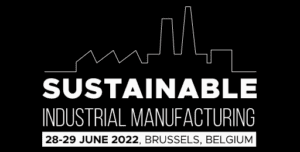ESG in Manufacturing: Aligning Profit and Purpose
Environmental, social, and governance (ESG) initiatives have rapidly become front and center for companies in virtually every sector, including manufacturing. Regulatory pressures, social unrest, increasingly dire climate conditions, and heightened consumer and investor awareness are creating new urgency for manufacturers to not only double-down on their ESG programs, but to ensure long-term and measurable change.
Parsable’s General Counsel and Head of ESG, Yasmin Zarabi, recently participated in a panel discussion on “Aligning Profit and Purpose: Measurement, Disclosure and Transparency” during the ESG in Action conference hosted by the CCBJ (Corporate Counsel Business Journal). Together with Sharmila Kassam, Executive Director of AIF Global Institute, and Matt DiGuiseppe, Vice President of Research and ESG at Diligent Corporation, the panel discussed the definition of ESG, why it matters and priorities when structuring an ESG program.
What is ESG in the Context of Manufacturing?
“ESG is a term that’s tossed around these days, but even two people engaged in a conversation can find themselves talking about different things,” noted Matt. According to Yasmin, ESG should be thought about holistically and, particularly in manufacturing settings, should include (but is not limited to):
- Environmental: The production of goods with regards to climate impact, energy and resource and material use
- Social: Talent attraction and retention, employee and community engagement, health and safety, human rights, and diversity and inclusion
- Governance: Ethics and compliance, corporate governance, supply chain management, product quality, cybersecurity and data protection
Investors, Consumers and Employees as ESG Stakeholders
The C-suite and boards are paying closer attention and broadening their roles to become key ESG stakeholders, especially as investors are showing a desire to fund more innovation in this area. Recent research from Morningstar indicated that ESG-oriented equity funds have outperformed their non-ESG counterparts through 2020. The US SIF Foundation, an arm of the The Forum for Sustainable and Responsible Investment, reported that sustainable investing assets reached $17.1 trillion, or one in every three dollars of the total U.S. assets under professional management – a 42% increase over 2018.
Consumers, too, are demanding more accountability and visibility, and speaking up with their purchasing power. Data from Boston Consulting Group (BCG) shows that the pandemic has accelerated this awareness: 90% of consumer respondents said they were equally or more concerned about environmental issues after the COVID-19 outbreak; and nearly 95% said they believed their personal purchasing actions could help reduce unsustainable waste, tackle climate change, and protect wildlife and biodiversity.
Last but not least, as the labor shortage continues to wreak havoc on manufacturing and the supply chain’s ability to return to pre-pandemic output, current and future workers also are emerging as critical ESG stakeholders. In a survey of 1,000 participants, nearly half – and 75% of Millennials – said they would take a job with a lower salary if the company had stronger principles of sustainability.
Link Between ESG and Value Creation in Manufacturing
“Accelerating environmental and social improvements have a clear impact on profitability in manufacturing. Profitability and productivity can be achieved in parallel with the reduction of waste, a smaller carbon footprint and a safer workplace,” said Yasmin.
She noted that ESG contributes to corporate cash flow in five ways, by: 1) facilitating top-line growth; 2) reducing costs; 3) minimizing regulatory and legal interventions and fines; 4) increasing employee productivity; and 5) optimizing investment and capital expenditures.
All of these require visibility, traceability and data – the capabilities and information that executives need in order to make the best long- and short-term decisions:
- Visibility: The degree to which a company can see exactly what’s happening at all levels across the supply chain. This includes real-time insight, analysis and predictive problem-spotting.
- Traceability: The degree to which a company can follow the exact path and process of every input, including provenance and origin information, as well as insight into the conversion process and certifications. How do you conduct a root cause analysis before it’s even brought to production?
- Data and analytics: The degree to which a company understands what data to collect, where to source or capture it, and whether it’s accurate. How do you boil it into a single source of truth to analyze and then to act on – whether that’s to remediate, predict and/or prevent?
The Critical Role of Technology in ESG
So how can we achieve more visibility, traceability, and data and analytics? ESG and technology go hand in hand, said Yasmin. Most manufacturers currently lack a platform designed to provide these three crucial elements across the entire company and supply chain, and typically try to combine legacy enterprise resource planning (ERP) solutions with home-grown visualization and analysis tools. But these systems weren’t built for that purpose, and their ability to automate traceability and visibility with multiple ecosystem partners is limited.
The adoption of connected worker digital tools and other technologies like artificial intelligence (AI), the Internet of Things (IoT), blockchain and 5G is making it easier to gather and operationalize information in real time. These technologies can help companies to better analyze how their operational processes impact the environment, their employees’ safety and well-being, and more, while predictive and prescriptive analytics encourage the optimal use of resources, materials and energy.
For example, digital standard operating procedures (SOPs), that can be updated in real-time to accommodate quickly-changing conditions, help ensure best practices are quickly adopted across teams and work sites, reducing everything from time and material waste to injuries and accidents.
Accelerated by the right technology, companies can now truly build a culture of ESG across the enterprise where every employee is a steward, versus ESG as a siloed department or top-down mandate. A connected, digitally empowered workforce is essential to get there.






